Click on images to enlarge
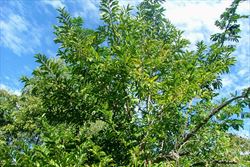
habit (Photo: Sheldon Navie)
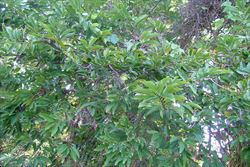
habit (Photo: Sheldon Navie)

leaves (Photo: Sheldon Navie)

immature fruit with regular lumps (Photo: Sheldon Navie)

close-up of seed (Photo: Tracey Slotta at USDA PLANTS Database)

the fruit of soursop (Annona muricata), with curved prickles (Photo: Sheldon Navie)
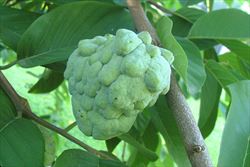
the fruit of atemoya (Annona cherimola x Annona squamosa), with irregular lumps (Photo: Sheldon Navie)

leaves (Photo: Sheldon Navie)
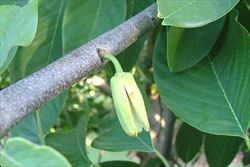
branch and flower (Photo: Sheldon Navie)
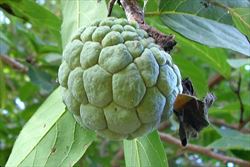
close-up of fruit with numerous rounded lumps (Photo: Sheldon Navie)
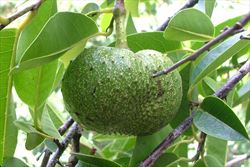
the green fruit of bullock's heart (Annona reticulata), which are almost smooth except for some tiny projections (Photo: Sheldon Navie)

the bluish-green fruit of cherimoya (Annona cherimola ) look like they have numerous overlapping scales, some of which have small rounded protuberances (Photo: Forest and Kim Starr, USGS)
Scientific Name
Annona squamosa L.
Family
Annonaceae
Common Names
custard apple, sugar apple, sugar-apple, sweet apple, sweet sop, sweetsop
Origin
This species is widely cultivated in the tropical regions of the world and its exact origin is obscure. It is thought to have originated in the Caribbean and/or in other parts of tropical America.
Naturalised Distribution
Naturalised in the coastal districts of northern and eastern Australia. This species is most common and widespread in northern Queensland. It is also naturalised in central and south-eastern Queensland and in the north-western parts of the Northern Territory.
Also naturalised throughout the tropical regions of the world, including in south-eastern USA (i.e. Florida) and on some Pacific islands (i.e. French Polynesia and Nauru).
Notes
Sugar apple (Annona squamosa) has escaped cultivation and become naturalised in the wetter tropical regions of northern Australia. It is an emerging environmental weed in northern Queensland, where it grows on the fringes of tropical rainforests, in bushland along waterways (i.e. riparian areas), in coastal environs and on offshore islands.
Though it is not widely regarded as a serious environmental weed, sugar apple (Annona squamosa) was recently found to be one of the more widespread and troublesome invasive exotic species occurring on the continental islands of the Great Barrier Reef Marine Park. This species, in conjunction with other invasive plants, is also thought to have the potential seriously undermine the conservation and aesthetic values of individual island National Parks in this region.
Sugar apple (Annona squamosa) is also reported to be moderately invasive on Nauru.

